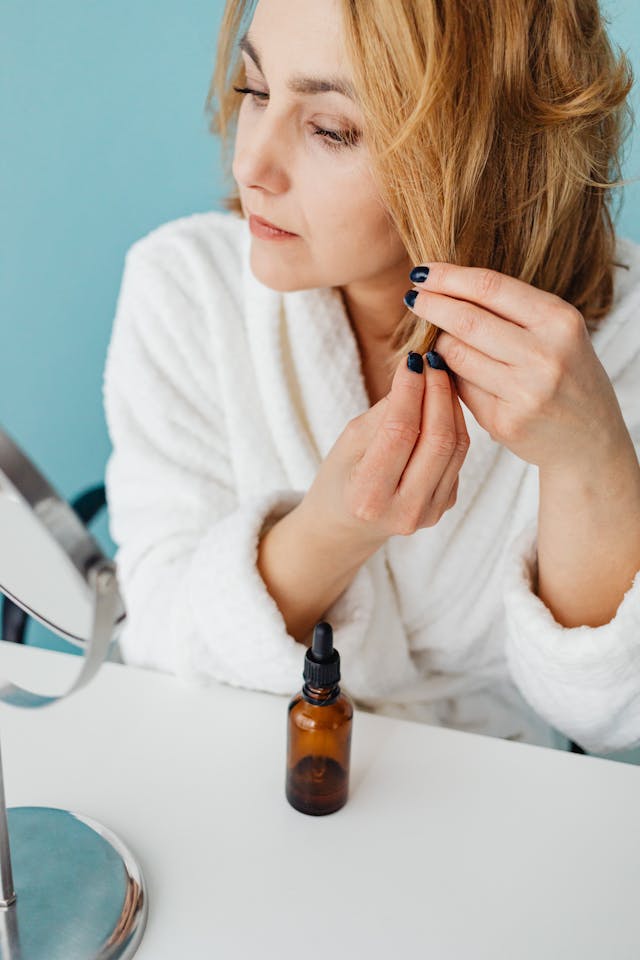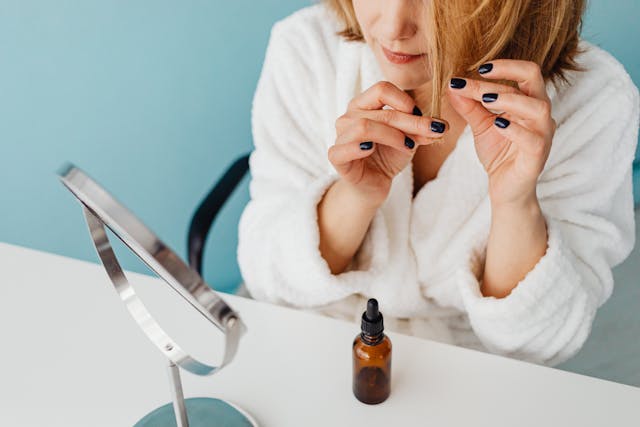Finding ways to revive and revitalize hair can often feel like navigating a jumble of products and procedures. One method that has gained substantial popularity in recent years is protein treatment. Many people swear by its transformative possessions, but what happens to your hair after you undertake this treatment?
Indulging the science behind treatments is key to appreciating their aids. You might wonder how protein affects hair structure and health, and why some individuals experience stunning results while others do not. Let’s dive into the world of protein treatments and explore the changes that your hair undergoes post-treatment.
The Basics of Hair Structure
What Is Hair Made Of?
Before we plunge into the power of protein treatments, it’s vital to comprehend what your hair is composed of. Hair is predominantly made of a protein called keratin, which forms the structure chunks of each strand. This fibrous protein gives hair its strength, structure, and resilience.
- Keratin: Keratin is the main protein found in hair, skin, and nails, and it provides strength and protects against damage.
- Hydration and Oils: While keratin is critical, the moisture and natural oils in your hair also play a significant role in maintaining its health and appearance.
Understanding this fundamental structure is crucial because it sets the stage for how these treatments can enhance or restore your hair.
Why Do Hair Treatments Matter?
Maintaining healthy hair goes beyond just aesthetics; it’s about safeguarding the hair can withstand ecological stressors, heat styling, and chemical procedures. Over time, hair can become damaged, resulting in flimsiness, damage, and frizzle. This is where treatments come into play, offering a potential solution for reviving tired tresses.
- Repairs Damage: Protein treatments can help repair and fortify damaged hair by replenishing lost keratin.
- Improves Elasticity: Regular treatments can enhance the hair’s elasticity, making it less prone to breakage.
With this context, let’s explore what happens to your hair after you undergo a treatment.

The Effects of Protein Treatment on Hair
Strengthening the Hair Shaft
One of the most immediate effects of a protein treatment is the strengthening of the hair shaft. When applied correctly, these treatments can help fill in gaps in the hair’s structure caused by damage.
- Reinforces Weak Areas: The protein binds to the hair shaft, creating a protective layer that reinforces weak points, reducing the likelihood of breakage.
- Increases Thickness: By adding protein to the hair, it can appear thicker and fuller, giving you that luscious look you may be striving for.
If you’ve ever experienced thinning hair, a treatment might provide the boost you need to reclaim that volume and strength.
Improved Moisture Retention
Interestingly, while treatments are primarily known for strengthening hair, they also play a role in moisture retention. Here’s how it works:
- Balance Between Protein and Moisture: Healthy hair requires a balance of protein and moisture. A good treatment will not only add strength but also help your hair retain moisture more effectively.
- Reduced Frizz: By locking in moisture, your hair may appear smoother and more manageable, reducing that pesky frizz that can plague so many.
This moisture-locking ability can dramatically change your hair’s overall texture and feel.
Enhancing Shine and Luster
After a protein treatment, many individuals report a noticeable increase in shine. Why is that?
- Smoothing Cuticles: Protein helps smooth the cuticles (the outer layer of the hair), allowing light to reflect off the strands better. This can give your hair a glossy, radiant finish.
- Color Retention: If you dye your hair, treatments can help maintain color vibrancy by sealing in the dye and preventing it from fading.
Who doesn’t want hair that shines like it’s been kissed by sunlight? This newfound luster can boost your confidence and make your hair the center of attention.
The Long-Term Impact of Protein Treatments
Building a Routine
So, how often should you consider getting treatments? While it varies from person to person, a general guideline is to incorporate them into your hair care routine every 4 to 6 weeks, depending on your hair type and condition.
- Overdoing It: While protein is beneficial, too much can lead to stiffness and brittleness. It’s essential to find the right balance.
- Tailored Treatments: Everyone’s hair is different. Observing how your hair responds can guide you in adjusting the frequency and type of treatments.
Establishing a routine tailored to your hair’s needs can maximize the benefits of protein treatments.
Signs Your Hair Needs More Protein
Wondering how to tell if your hair needs a protein boost? Here are some indicators:
- Brittleness: If your hair snaps easily when you comb or brush it, it may be time for a treatment.
- Lifeless Appearance: Dull, flat hair that lacks bounce could benefit from a protein infusion to revitalize it.
Listening to your hair’s needs can help you maintain its health and beauty.
Common Misconceptions About Protein Treatments
Will Protein Treatments Weigh My Hair Down?
A common concern about treatments is that they may weigh hair down. While this can happen if too much product is applied, using the right amount typically doesn’t lead to heaviness.
- Moderation is Key: Using a moderate amount ensures that the protein can bond effectively without overwhelming the hair.
- Choose Lightweight Formulas: There are many treatments available that are specifically designed to be lightweight and not weigh hair down.
Choosing the right product and applying it correctly can help avoid this concern.
Are Protein Treatments Only for Damaged Hair?
You might think that treatments are only necessary for hair that’s seen better days. However, even healthy hair can benefit from occasional treatments.
- Prevention is Better Than Cure: Regularly using treatments can help maintain healthy hair and prevent future damage.
- Enhanced Manageability: Even if your hair feels healthy, protein can improve its texture, making styling easier.
Incorporating it into your routine can be a proactive approach to hair care.

Tips for Maximizing the Benefits of Protein Treatments
Combine with Moisturizing Treatments
To get the best results from your treatment, consider pairing it with moisturizing treatments. Here’s how to do it:
- Layering Technique: After applying a treatment, follow it up with a deep conditioning treatment to restore moisture.
- Hydration Balance: This balance will ensure that your hair remains strong yet flexible, reducing the risk of brittleness.
Combining treatments can amplify the effects, ensuring your hair remains healthy and vibrant.
Maintain a Healthy Hair Care Routine
A comprehensive hair care routine complements treatment. Here are some tips to consider:
- Gentle Cleansing: Use a sulfate-free shampoo to prevent stripping hair of its natural oils.
- Regular Trims: Trimming your hair can eliminate split ends and promote healthier growth.
These practices create a nurturing environment that allows treatments to work their magic effectively.
Conclusion: Embrace the Power of Protein Treatments
The journey to vibrant, healthy hair doesn’t have to be complicated. Protein treatments can significantly enhance the health and appearance of your hair, providing strength, moisture, and shine.
By understanding what happens to your hair after a treatment, you can make informed decisions about incorporating it into your hair care routine. Embrace the power of treatments and unlock your hair’s potential for beauty and resilience.
Are you ready to take the plunge? With the right approach, you can enjoy the benefits of revitalized hair and watch as your strands transform into the luscious locks you’ve always desired!
